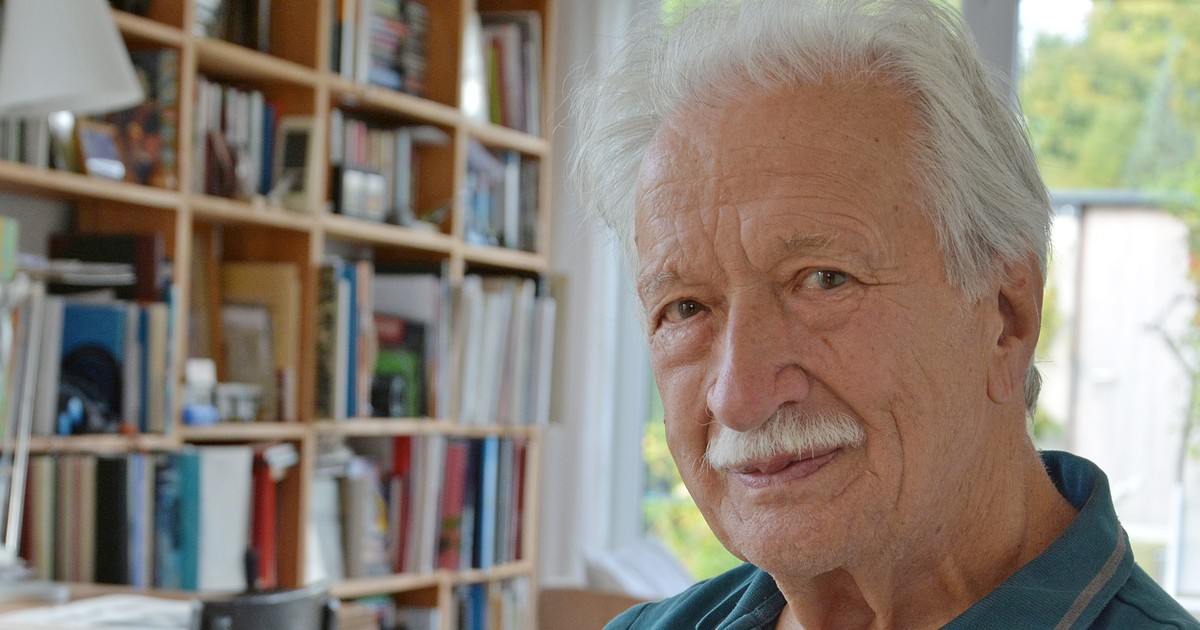Holocaust survivor Ernst Grube does not shy away from any effort to preserve his story for posterity: he already exists as a hologram and now also as a comic character. The Berlin artist Hannah Brinkmann drew his eventful life.
It is in his intestines, in his nerves, in every fiber of his body: the feeling of loss, fear and loneliness that accompanied Holocaust survivor Ernst Grube throughout his life. With drawings of cells, organs and finely branched veins, the Berlin illustrator Hannah Brinkmann tries to capture in pictures all the unspeakable things that the now 91-year-old experienced as a Jewish child in the story lines of her new graphic novel “Time Doesn’t Heal Wounds.” The Nazi era, but also as a young communist in West Germany after 1945.
Ernst Grube’s verdict on the book was already clear shortly before its publication date in mid-November: “This comic is my legacy as a contemporary witness.” The idea for the project came from the Munich NS Documentation Center, where Grube has been a guest for discussions for years. There he spoke for a long time, primarily about the period up to 1945. “What was less known was his work as a peace activist and communist in the post-war period,” says Denis Heuring, who is responsible for the “Publications” department.
Brinkmann’s graphic novel – the graphic implementation of a complex content for a more adult audience – brings into focus topics that for a long time received little attention in the Federal Republic: the systematic suppression of Nazi crimes, the seamless continued employment of perpetrators and followers in the justice system and Authorities persecute members of the German Communist Party, which was banned in 1956.
In her second book, the young artist links the story of the survivor Ernst Grube with that of his later judge: From countless archive documents, Brinkmann reconstructs the biography of the lawyer Kurt Weber, who was a follower in the Nazi regime and rose to become a public prosecutor and deputy head of the authority. For this career he had sacrificed some convictions and his relationship with the Jewish artist Alice Droller, who was later murdered in Auschwitz.
“Weber was not a classic Nazi, but every decision he made led him deeper into the Nazi system,” says the illustrator, who worked on the book for three years. After the war, the lawyer made it to the presiding judge at the Federal Court of Justice of the young Federal Republic – where in 1959 he sentenced a young master painter and communist from Munich to one year in prison as a “public threat” for a leaflet campaign.
The condemned man was Ernst Grube, for whom this second persecution was a bad déjà vu: he, who was lucky to have survived the concentration camp, spent nine months in a Bonn prison, four of them in complete isolation. “It was a prison of the worst kind, the room was maybe one meter wide, no one was allowed to talk to me,” the contemporary witness remembers. The feeling of abandonment that had already burrowed under the skin of the completely self-sufficient twelve-year-old in the Theresienstadt ghetto caught up with the now 26-year-old father of a small son.
Time doesn’t heal wounds
The 260-page work is published by Avant-Verlag, which already published Brinkmann’s award-winning first novel “Against My Conscience” about a conscientious objector in the 1970s. “With their very special narrative possibilities, comics fit well into the spectrum of memory work,” says a publisher spokesman. Particularly when dealing with the Shoah, the question often arises as to whether and how documentary images should be used. A drawing, on the other hand, can “depict emotional truths better” precisely because it does not claim to be “authentic.”
Images full of friendship and sadness, full of conviction and disappointment, full of hope and despair: without Ernst Grube’s openness, this graphic novel could not unfold its power. “I am grateful that I was able to tell his story,” says Hannah Brinkmann. Ernst Grube is satisfied with the “comic” format: “The book can awaken understanding, curiosity and excitement in young people, and it gives educators the opportunity to work with it.” Getting into conversation is and remains his goal of remembrance work, ideally after death. However, the pain of all the unlived lives of his Jewish relatives and friends returned to him in old age. “I realize now,” says Grube’s comic self in the last image: “Time doesn’t heal wounds.”
Ernst Grube and Hannah Brinkmann will present the book “Time Heals No Wounds” on Thursday, November 21st, at 7 p.m Munich Nazi Documentation Center at Max-Mannheimer-Platz 1. Entry is free.


